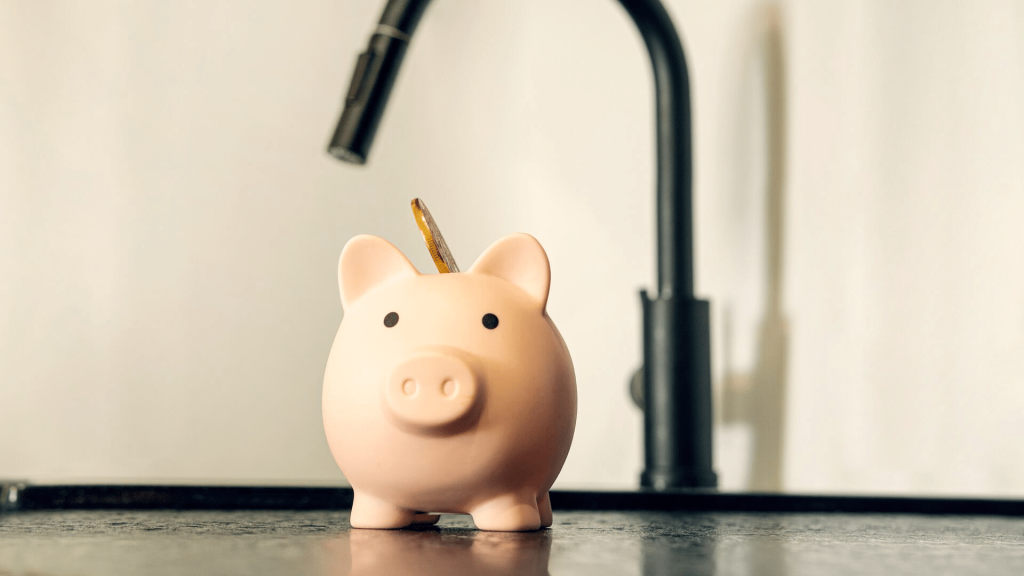5 Steps to Save on Your Water Bill
Anúncios
Have you ever wondered what you can do to lower your water bill? If the answer is yes, you’re not alone. Saving water is an increasing concern worldwide, and adopting sustainable practices not only benefits the environment but also leads to lower bills.
More and more people are looking for practical solutions to save water and, consequently, reduce their monthly expenses. High water bills can significantly impact your budget, but the good news is that there are several effective strategies to help you control these costs.
In this comprehensive guide, we present 5 steps to save on your water bill with valuable expert advice that will not only optimize your water use but also lead to a considerable reduction in your monthly expenses.
Anúncios

The Importance of Saving Water
Before diving into the 5 steps to save on your water bill, it’s important to understand why saving water is crucial. Water bills are one of the most significant monthly expenses in our budgets. Reducing water consumption can lead to significant savings, freeing up financial resources for other priorities like investments and family goals.
Beyond economic benefits, saving water plays a fundamental role in environmental preservation. By adopting more conscious consumption habits, we help mitigate climate change and combat desertification—a problem affecting millions of people globally.
Anúncios
Every effort counts, creating a positive impact not only on our lives but also on the planet’s health. This guide offers practical tips to help you save water and lower your bill with minimal effort.
Understanding Your Water Bill
Understanding your water bill is essential for managing consumption and reducing costs. Utility companies use units like Centum Cubic Feet (CCF) and gallons to measure water usage. One CCF equals 748 gallons. On average, each person uses about 82 gallons of water per day, resulting in significant monthly consumption for a family. This varies by region.
Your water bill can provide valuable insights into your consumption habits. Many utility companies include charts showing water usage over time, helping you identify peak periods and adjust habits to save money.
During summer, water use tends to increase, especially for irrigation, leading to higher bills. Understanding these seasonal variations and taking preventive measures is key to avoiding unpleasant surprises.
5 Steps to Save on Your Water Bill
Water is a precious resource, and managing it efficiently not only helps preserve the environment but also leads to significant savings on monthly expenses.
With growing awareness of the importance of conservation, many people are seeking solutions to adapt their lifestyles to use this vital resource more responsibly.
Let’s explore practical strategies and 5 steps to save on your water bill that can transform your consumption.
1. Check for Leaks
One of the most effective ways to save water and reduce costs is to fix leaks as soon as they are detected. A simple dripping faucet or leaking toilet can waste thousands of liters of water annually, unnecessarily increasing your water bill.
Regularly inspect pipes, faucets, and water-using appliances, addressing any issues immediately. For example, replacing worn-out washers can prevent major losses and significantly lower your monthly bill.
How to Identify Leaks:
- Faucets and Showers: Look for drips. A small leak can waste up to 30 liters of water per day.
- Toilets: Add a drop of food coloring to the tank. If color appears in the bowl after 30 minutes, there’s a leak.
- Pipes: Check walls for damp spots or mold, which could indicate pipe leaks.
2. Install Efficient Equipment
Investing in water-saving equipment is an excellent way to reduce consumption.
This includes efficient faucets, showers, and toilets, as well as energy-certified washing machines and dishwashers. These devices use advanced technology to minimize waste by adjusting water flow and pressure as needed.
Benefits of Efficient Equipment:
- Flow Reduction: Aerator-equipped faucets and showers reduce water flow without compromising pressure.
- Low-Flow Toilets: Modern models use up to 50% less water per flush compared to older ones.
- Efficient Washing Machines: Opt for machines that optimize water use, especially if you do laundry frequently.
3. Adopt Conscious Consumption Habits
Small changes in daily habits can significantly impact the amount of water you use.
Simple actions, like turning off the tap while soaping dishes or using a broom instead of a hose to clean sidewalks, can make a big difference in your water savings.
Tips for Conscious Habits:
- Turn Off Taps: Close the tap when brushing your teeth or lathering your hands.
- Shorter Showers: Reduce your shower time; every minute saved can save several liters of water.
- Use Full Loads: Wait until you have a full load before running the washing machine.
4. Reuse Water Whenever Possible
Reusing water is a smart practice that can help reduce overall consumption.
For instance, rainwater collection systems can be used for watering plants or cleaning outdoor areas, and water used to rinse vegetables can be repurposed for watering plants.
Examples of Reuse:
- Rainwater: Install a rainwater collection system for irrigation or cleaning.
- Vegetable Wash Water: Use it to water plants.
- Pool Water: After treatment, pool water can be used for garden irrigation.
5. Monitor Your Consumption
Tracking water usage is essential for preserving this vital resource. Every drop saved adds up, resulting in a lower water bill at the end of the month.
Encourage everyone in your household to adopt responsible habits, creating a culture of conservation.
How to Monitor Your Consumption:
- Read the Water Meter: Regularly record the meter numbers and track changes over time.
- Use Monitoring Apps: There are apps that help track your water usage and identify patterns.
- Compare Past Bills: Analyze your current water bill against previous months to identify areas for improvement.
See more: 8 Ways to Invest in the Tourism Sector
